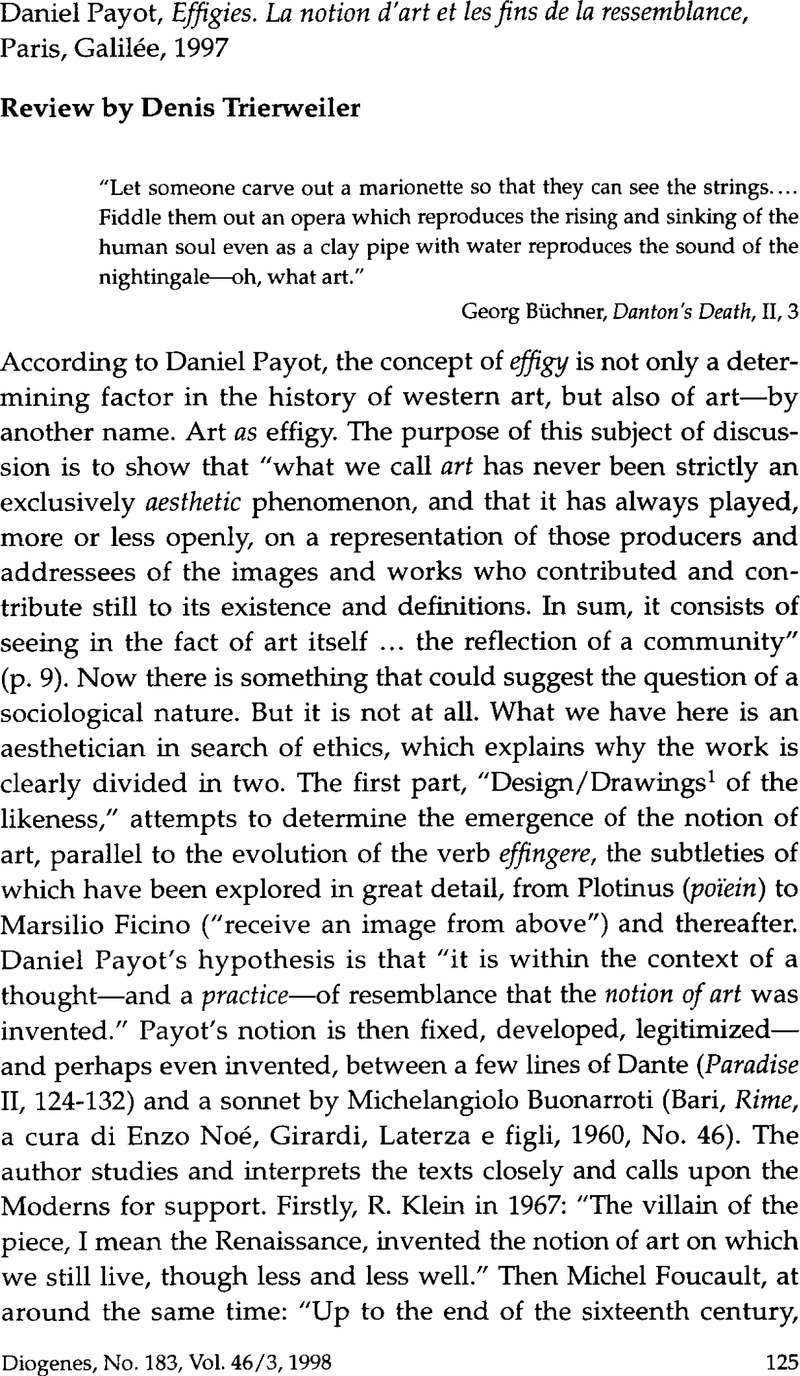No CrossRef data available.
Published online by Cambridge University Press: 28 February 2024

1. The French title "Les dess(e)ins du ressemblant" is a play on words, with the term dessin (drawing) encompassed within the term dessein (design).
2. Robert Klein, "The Eclipse of the Work of Art" in Form and Meaning, trans. Madeline Jay and Leon Wieseltier, New York, 1979, p. 180, and Michel Fou cault, The Order of Things. An Archaeology of the Human Sciences, New York, 1970, p. 17.
3. Blaise Pascal, The Thoughts of Blaise Pascal, New York, 1961, no. 134.
4. Jean-Luc Nancy, The Inoperative Community, trans. Peter Connor et al., Minnea polis, 1991.
5. Maurice Blanchot, The Unavowable Community, trans. Pierre Joris, Barrytown, NY, 1988.
6. The use of the word "addresses" comes from Fr. Schlegel's notion of the use of the written word, of correspondence, to share and communicate. One must write, one must "address" the Other.
7. Walter Benjamin, "Franz Kafka" in Illuminations, trans. Harry Zohn, London, 1968, p. 129.
8. See this issue for the same problem in the text by Hans Belting on the theft of the Mona Lisa.
9. Paul Celan, "The Meridian" in Collected Prose, trans. Rosmarie Waldrop, Man chester, 1986, p. 37-38.